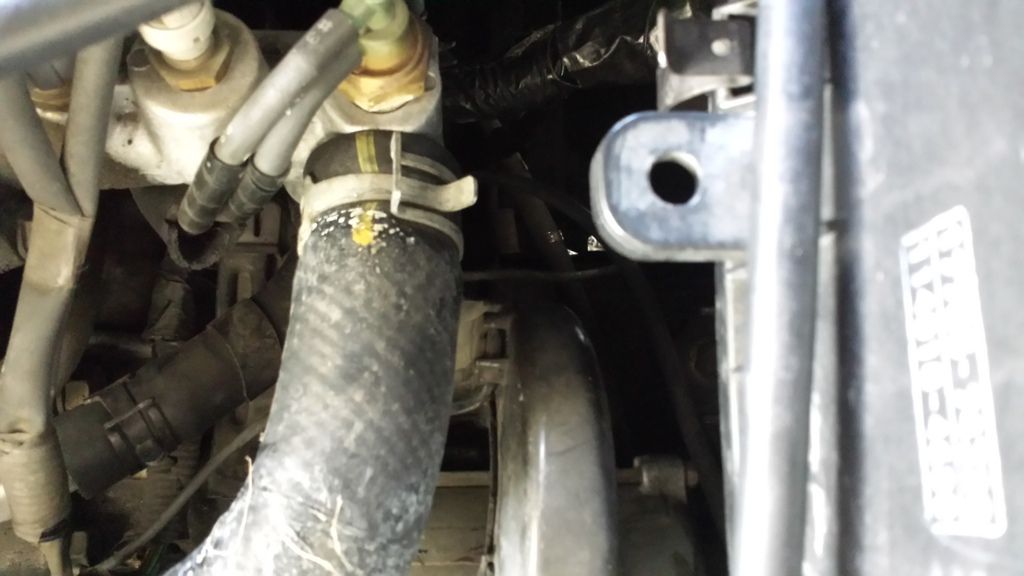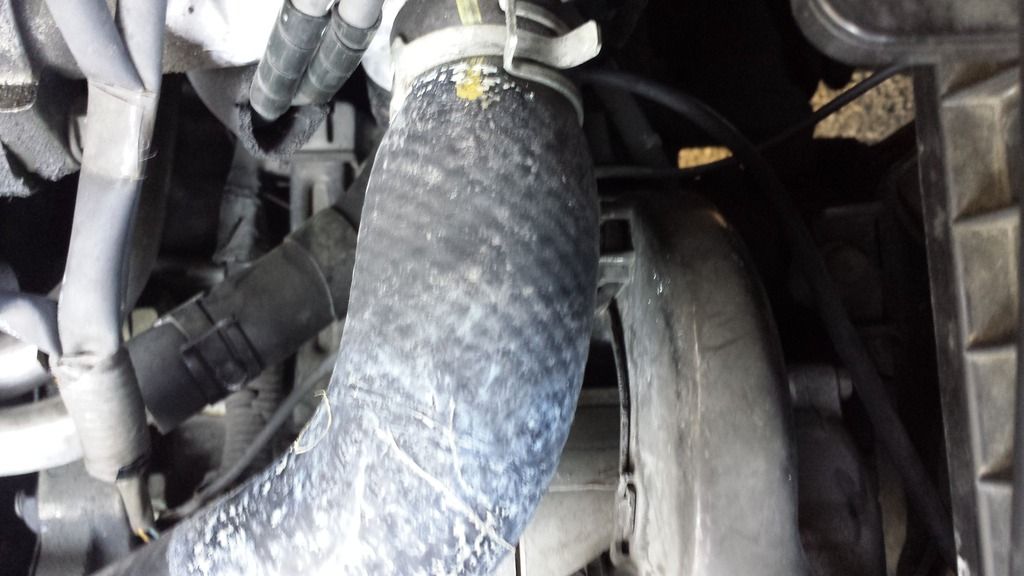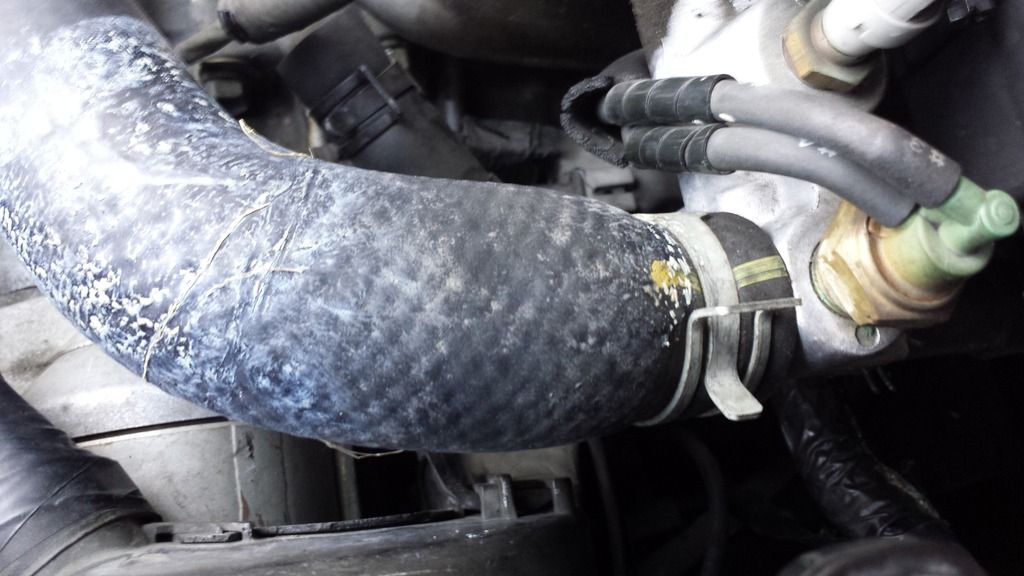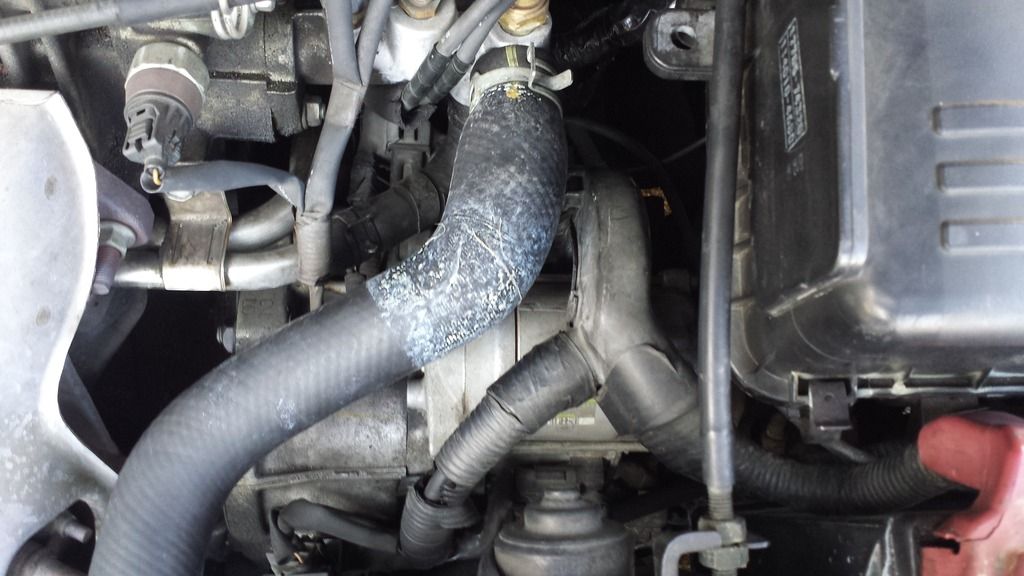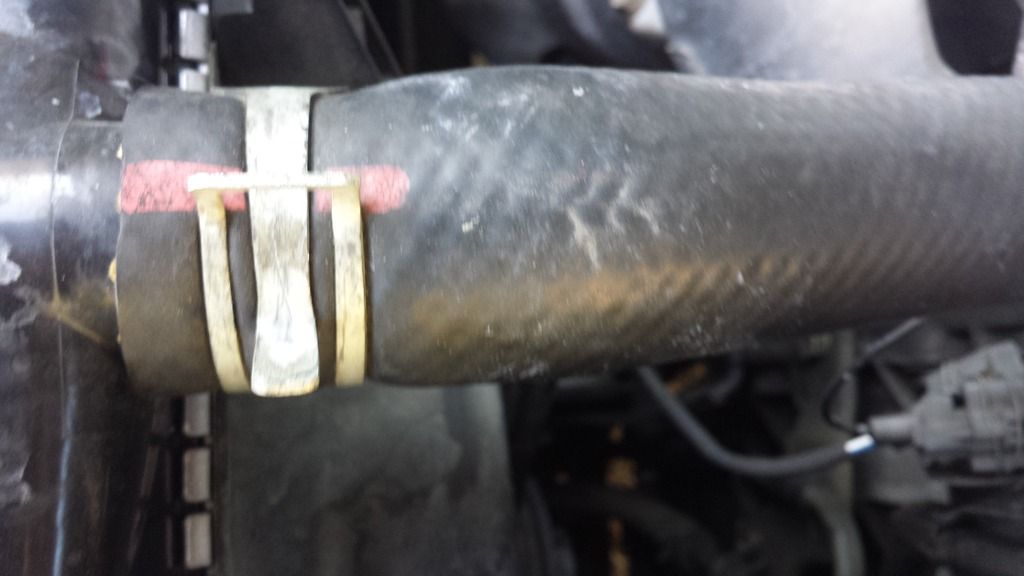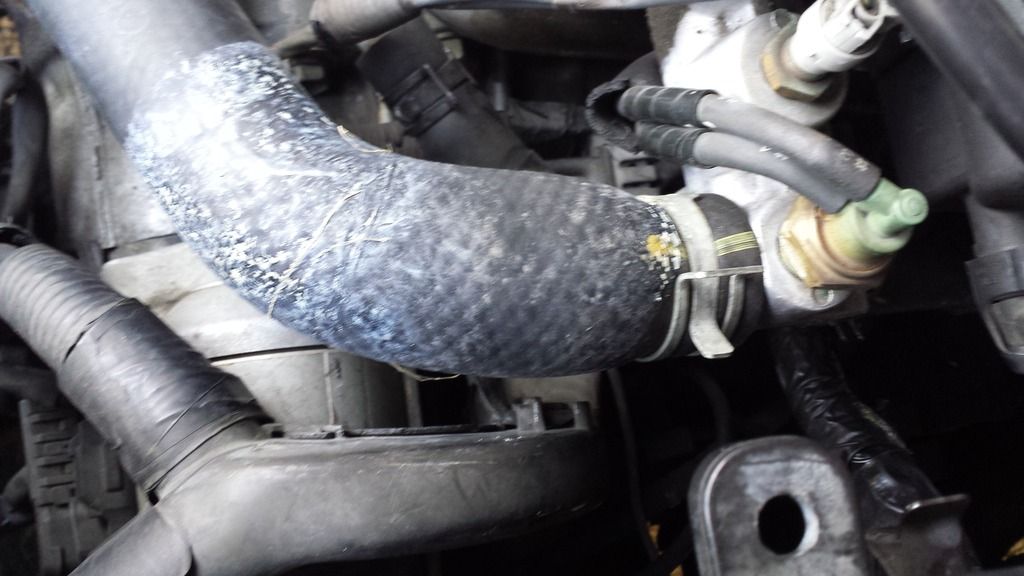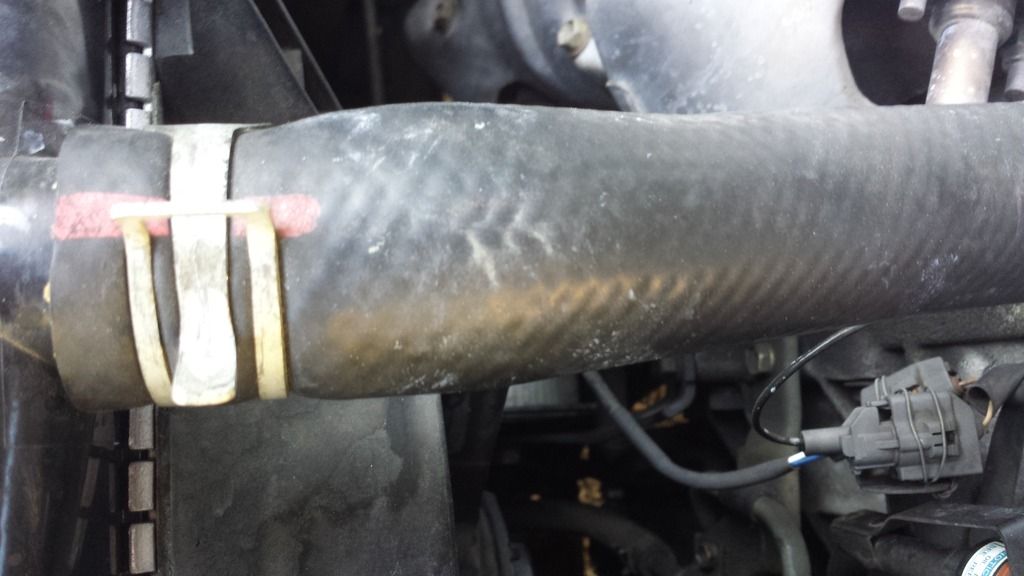  |
 Feb 21, 2018 - 2:08 PM Feb 21, 2018 - 2:08 PM
|
|
|
Enthusiast   Joined May 2, '06 From Nevada Currently Offline Reputation: 0 (0%) |
I have a Celica 1995 GT. My upper radiator hose is OEM Toyota part, 7 years, 80,000 miles old. My radiator cap is new, OEM Toyota, correct 88Pa. NO overheating or drive-ability problems whatsoever.
When fully warmed, my upper hose is noticeably swollen, more so at the the engine connector. (which is to be expected as there hot coolant enters the hose before it bends). I know OEM Toyota hoses last A LONG time. I replaced previous ones after 16 years, 150,000 miles as the precaution - they looked fine. I also know they are somewhat thin and soft even when new and supposed to swell somewhat by design. I pressure tested my cooling system - perfectly fine. I got and tested several caps - new and used, and pressure tested them according to the OEM repair manual. Strangely, several OEM Toyota caps I got - new and correct, 88Pa (.9 bar) actually open all past 1.5bar when tested! - some way more! (I tested about 5 from different souses - all correct 88Pa). The manual says should be within 74-108Pa, discard if less - says nothing what if more - is it OK? All cause the same hose swelling. Now - I have one worn cap, opens almost at no pressure. That one of course causes NO swelling at all. And the car runs fine with it, no overheating whatsoever - just fills and overfills the bottle after a run - to be expected with very little pressure. That is it. And no - I do not have head gasket problems (it would not matter anyway as the cap would release the gasses) NOW MY QUESTION - HOW MUCH SWELLING of the upper radiator hose is normal, by design, to ignore and nothing to worry about? General answers online have a lot of nonsense - you have this, you have that. From your experience - what is the normal, acceptable swelling of the upper OEM Toyota hose car fully warmed up? With a brand new (or unworn) cap? Thanks a lot! Larry |
 Feb 21, 2018 - 8:13 PM Feb 21, 2018 - 8:13 PM
|
|
|
Enthusiast      Joined Mar 11, '06 From Way South Chicago Currently Offline Reputation: 0 (0%) |
Can you get a photo? I can tell pretty well by that, some swelling is normal but not a lot and certainly not any ballooned spots or anything.
-------------------- |
 Feb 21, 2018 - 9:11 PM Feb 21, 2018 - 9:11 PM
|
|
|
Enthusiast   Joined May 2, '06 From Nevada Currently Offline Reputation: 0 (0%) |
Can you get a photo? I can tell pretty well by that, some swelling is normal but not a lot and certainly not any ballooned spots or anything. Sure - cold and hot. DISREGARD white crap on it - stupid attempt to wrap some tape - the hose looks and feels like new. In fact - it was swelling when new, just do not remember how much since I drove several years with no pressure (bad cap). Cold (no pressure): 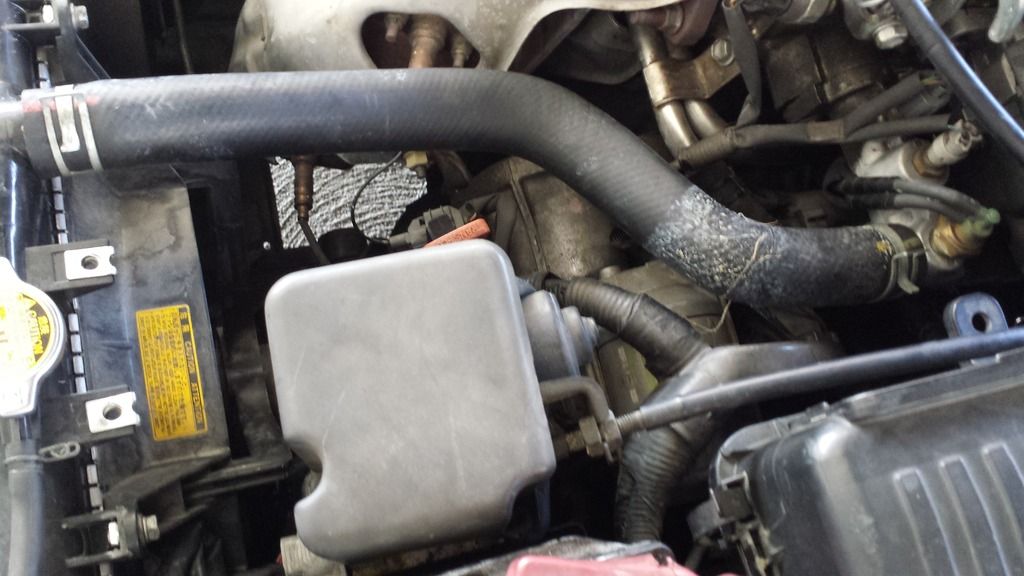   Hot (under pressure):       The hose itself is not swollen - it bulges only under pressure, and then returns back to shape. Obviously, the engine part looks the scariest, but this is where dynamic pressure is the most (running water) The cap is new. Please compare with your experiences. Thanks a lot! 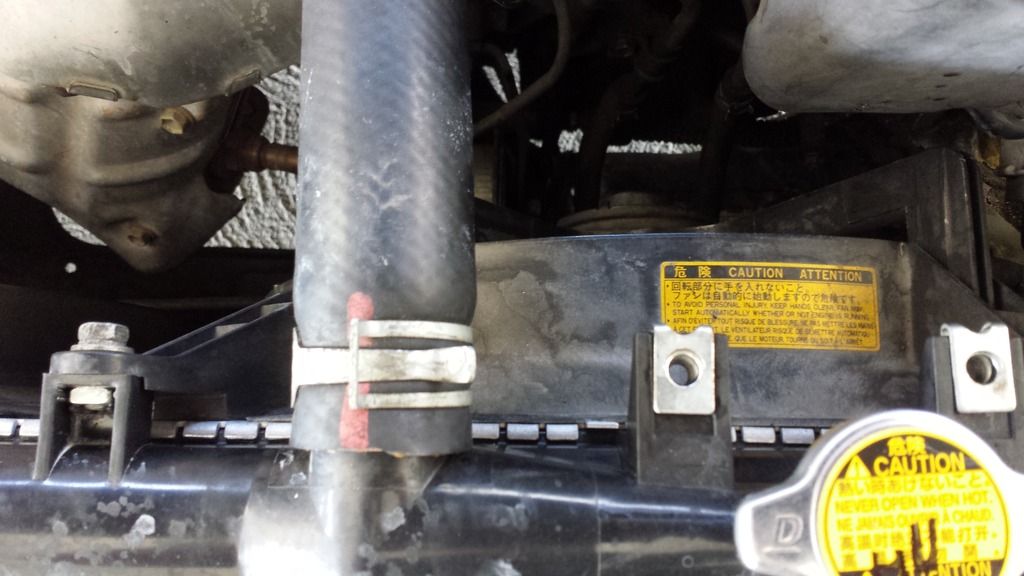
|
 Feb 21, 2018 - 9:25 PM Feb 21, 2018 - 9:25 PM
|
|
|
Enthusiast   Joined May 2, '06 From Nevada Currently Offline Reputation: 0 (0%) |
|
 Feb 21, 2018 - 9:40 PM Feb 21, 2018 - 9:40 PM
|
|
|
Enthusiast      Joined Feb 23, '12 From Warrior, AL Currently Offline Reputation: 0 (0%) |
That seems a little much, if it's not too expensive I'd go ahead and replace it if it were me.
This post has been edited by Box: Feb 21, 2018 - 9:41 PM -------------------- 2001 Miata LS 5-speed
|
 Feb 21, 2018 - 9:44 PM Feb 21, 2018 - 9:44 PM
|
|
|
Enthusiast   Joined May 2, '06 From Nevada Currently Offline Reputation: 0 (0%) |
Not expensive at all. But - would it not suck if a new one does the same?
|
 Feb 21, 2018 - 9:58 PM Feb 21, 2018 - 9:58 PM
|
|
|
Enthusiast   Joined May 2, '06 From Nevada Currently Offline Reputation: 0 (0%) |
That seems a little much, if it's not too expensive I'd go ahead and replace it if it were me. There is something strange about new Toyota caps. My old worn ones have "ND"' on the left,, "0.9" (o.9 bar) on the right. I cannot find these any more. The new ones have "D" on both wings. Even so the both have 88Pa (0.9 bar) on it - the test shows like 1,5 bar, so they are more like newer 1.1 bar (which is a new standard pressure on most cars now) Like I said - I tested 5 of them, all with correct labels - and all with very high release pressure. Which gives? |
 Feb 21, 2018 - 10:14 PM Feb 21, 2018 - 10:14 PM
|
|
|
Enthusiast      Joined Feb 23, '12 From Warrior, AL Currently Offline Reputation: 0 (0%) |
It just looks like the rubber is distressed where it's swelling, spots of weakness as it seems like the swelling is predominantly there. Rubber hoses are only good for about 5 years depending on use, so it probably really needs replaced anyway. Generally you'll do hoses when you flush and change out coolant, which is every 5 years or 100K miles for most cars.
As far as the new caps being above spec that's something you'd have to ask Toyota, if they're all from a similar time of production it could be they used the wrong spring spec or whatever. -------------------- 2001 Miata LS 5-speed
|
 Feb 21, 2018 - 10:28 PM Feb 21, 2018 - 10:28 PM
|
|
|
Enthusiast   Joined May 2, '06 From Nevada Currently Offline Reputation: 0 (0%) |
It just looks like the rubber is distressed where it's swelling, spots of weakness as it seems like the swelling is predominantly there. Rubber hoses are only good for about 5 years depending on use, so it probably really needs replaced anyway. Generally you'll do hoses when you flush and change out coolant, which is every 5 years or 100K miles for most cars. As far as the new caps being above spec that's something you'd have to ask Toyota, if they're all from a similar time of production it could be they used the wrong spring spec or whatever. C'on - I have an original presurized hose I overlooked - the small one goes to the throttle body. It started leaking after I put on the new cap, couple months ago. ORIGINALl hose - 23 years, 230,000 miles of hot desert weather! 5 year 100,000 miles is for American rubber. I have seen Toyotas (and Volvos, for that matter) with original hoses after 300,000 miles. Original, OEM. |
 Feb 22, 2018 - 12:23 AM Feb 22, 2018 - 12:23 AM
|
|
|
Enthusiast      Joined Feb 23, '12 From Warrior, AL Currently Offline Reputation: 0 (0%) |
Yeah they can last that long and not rupture, but that's standard rule of thumb for ALL makes. Rubber is rubber, formulation difference non-withstanding it doesn't care where it was made or what vehicle it's on. My brother has a 20 year old Durango with 260K miles with original hoses, so it's not just the Asian and European cars. Anyway it sounds like you're just wanting justification to not change the hose, so don't, worst case it ruptures and coats your engine bay in coolant and you have to tow it home.
-------------------- 2001 Miata LS 5-speed
|
 Feb 22, 2018 - 12:29 AM Feb 22, 2018 - 12:29 AM
|
|
|
Enthusiast      Joined Feb 23, '12 From Warrior, AL Currently Offline Reputation: 0 (0%) |
What you really have to worry about though is them collapsing. Next time it's hot and up to operating temp move the throttle body by hand or have someone rev it from inside the car and watch the hose for it collapsing in on itself, or the bulging getting worse, if it doesn't then you should be ok for now.
-------------------- 2001 Miata LS 5-speed
|
 Feb 22, 2018 - 3:35 AM Feb 22, 2018 - 3:35 AM
|
|
 Enthusiast  Joined Jan 10, '17 From Russia, Izhevsk Currently Offline Reputation: 0 (0%) |
Why did you decide that you do not have problems with the cylinder head gasket?
-------------------- Email - vad07@inbox.ru
|
 Feb 22, 2018 - 9:45 AM Feb 22, 2018 - 9:45 AM
|
|
|
Enthusiast   Joined May 2, '06 From Nevada Currently Offline Reputation: 0 (0%) |
Yeah they can last that long and not rupture, but that's standard rule of thumb for ALL makes. Rubber is rubber, formulation difference non-withstanding it doesn't care where it was made or what vehicle it's on. My brother has a 20 year old Durango with 260K miles with original hoses, so it's not just the Asian and European cars. Anyway it sounds like you're just wanting justification to not change the hose, so don't, worst case it ruptures and coats your engine bay in coolant and you have to tow it home. NO - What I am REALLY just wanting - for ALL YOU guys with a celica GT - prevefably with OEM upper hose - VERY PREFERABLY! - with a NEW STYLE and new cap - take a look at your upper hose when fully warmed and tell me how it looks. Would highly appreciate it! Why did you decide that you do not have problems with the cylinder head gasket? Because it would not do it - physics. However I pressure checked my cooling system - even unnecessary. |
 Feb 22, 2018 - 9:53 AM Feb 22, 2018 - 9:53 AM
|
|
|
Enthusiast   Joined May 2, '06 From Nevada Currently Offline Reputation: 0 (0%) |
Yeah they can last that long and not rupture, but that's standard rule of thumb for ALL makes. Rubber is rubber, formulation difference non-withstanding it doesn't care where it was made or what vehicle it's on. My brother has a 20 year old Durango with 260K miles with original hoses, so it's not just the Asian and European cars. Anyway it sounds like you're just wanting justification to not change the hose, so don't, worst case it ruptures and coats your engine bay in coolant and you have to tow it home. I would love to find a cap which opens presicely at 13psi or close around (like Toyota OEM specifies - 74 to 108Pa range) - as it supposed to - not 20+ like all the OEM and aftermarket I tested I could find - even so all labeled at 13psi. With this cap my swelling WOULD GO AWAY. It is that simple. Where can I find a cap like this? I thought Japanese would manufacture precisely - long gone? I tried to find a worn one - this precisely worn I could not find (I have too worn ones - open at 3-5psi). |
 Feb 22, 2018 - 9:59 AM Feb 22, 2018 - 9:59 AM
|
|
|
Enthusiast   Joined May 2, '06 From Nevada Currently Offline Reputation: 0 (0%) |
Any suggestion where how to get pics shown all the time? F!@#$%ng Photobucket wants money...
|
 Feb 22, 2018 - 10:10 AM Feb 22, 2018 - 10:10 AM
|
|
|
Enthusiast   Joined May 2, '06 From Nevada Currently Offline Reputation: 0 (0%) |
<blockquote class="imgur-embed-pub" lang="en" data-id="a/hbl3q"><a href="//imgur.com/hbl3q"></a></blockquote><script async src="//s.imgur.com/min/embed.js" charset="utf-8"></script>
https://imgur.com/a/hbl3q Ok - hopefully this will work - Images: https://imgur.com/a/hbl3q Thanks a lot guys in advance for your answers! |
 Feb 22, 2018 - 10:25 AM Feb 22, 2018 - 10:25 AM
|
|
|
Enthusiast   Joined May 2, '15 From NY Currently Offline Reputation: 3 (100%) |
In my 99 5SFE Camry with ~140k, the OEM hose (same hose but 2" longerr vs Celica) does NOT bulge like that. Your hoses are past their prime. In my experience (this was on a Mazda, btw), when the hose swells like that, the next step was that the tension clamp could not overcome the tension of the swelled hose and the system pressure, and would slowly leak at the clamp when hot.
Sure, the hose can last you another 10 years if you're lucky, or it can leave you stranded on a side of the road when it bursts. |
 Feb 22, 2018 - 10:44 AM Feb 22, 2018 - 10:44 AM
|
|
|
Enthusiast   Joined May 2, '06 From Nevada Currently Offline Reputation: 0 (0%) |
Here is a problem which baffles me. This happened recently when I replaced an old worn OEM Toyota cap (had about 3psi) - which I drove with for several years without any problems. Obviously with that cap there was NO swelling whatsoever. So the hose had been "underloaded" for years, so to speak. The old OEM cap has "ND" on the left wing and 0.9 on the right which stands for 0.9 bar= = 13psi = 88Pa, which is on the label. I cannot find this kind of cap any more. The new OEM Toyota style - "D" on both wings, same label 88Pa. Ok. I have collected 5 of them - new and slightly used, from different sources and places - and tested according to the OEM manual. (Attached) ALL of the new style open past 20Psi! - Some way past. Toyota OEM manual says reference range 10.7-14.9, replace if less - but what if much more? (See attachment!)
Once again - I tested 5!1 - all labeled 88Pa but test more like newer 108Pa standard. May be Toyota decided to use the same spring for all and build newer vehicles both for 88Pa and 108Pa able to withstand the same? But my car is 23 years old Where can I find a cap which is build with more precision like Japanese used to be? My point - I am sure if I could find a cap opening at 13psi or close around - as the manual reference range - I would have NO swelling! Makes sense? I tried to find this precisely worn cap but could not - either very worn or very tight. Where can I find a cap opening within the reference range? 20+psi is 50+%! More than the ratings! It is a lot! And I simply proved it - I got to another celica, attached pressure tester to the radiator, pumper to 20psi - woila - swollen upper hose looking just like mine! Seriously - does it make sense? I tested over and over again SEVERAL caps - same result! Please let me know what I am missing here. Thanks a lot! |
 Feb 22, 2018 - 10:54 AM Feb 22, 2018 - 10:54 AM
|
|
|
Enthusiast   Joined May 2, '06 From Nevada Currently Offline Reputation: 0 (0%) |
|
 Feb 23, 2018 - 10:12 PM Feb 23, 2018 - 10:12 PM
|
|
|
Enthusiast   Joined May 2, '15 From NY Currently Offline Reputation: 3 (100%) |
Seriously - does it make sense? I tested over and over again SEVERAL caps - same result! Please let me know what I am missing here. Thanks a lot! The joke is, the definition of insanity is doing the same thing over and over again expecting a different result. If you tested 5, and all are the same, have you considered the possibility that the gauge you tested them with is wrong, and not the caps? Your hoses are toast. Replace them before they blow, you overheat the engine and blow the head gasket on an engine design that is almost guaranteed to blow HG when overheated. This post has been edited by slavie: Feb 23, 2018 - 10:13 PM |
  |
1 User(s) are reading this topic (1 Guests and 0 Anonymous Users)
0 Members:
| Lo-Fi Version | Time is now: November 27th, 2024 - 5:11 PM |





